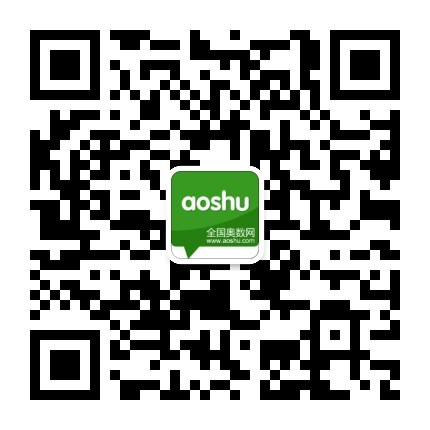КЧн“
ҮшлHҢW(xuЁҰ)РЈ
лS•rҶ–
лS•rҪвҙр
РЎҢW(xuЁҰ)РВВ„
ЦШьcЦРҢW(xuЁҰ)
ҪМҢW(xuЁҰ)ЩYФҙ
ИӨО¶ҳ·Ҳ@
РЎҢW(xuЁҰ)ФҮо}
ХZОД
”ө(shЁҙ)ҢW(xuЁҰ)
УўХZ
ЧчОД
ИХУӣ
әПЧч
ЎЎЎЎЎЎ ЎЎЎЎ
- РЎҢW(xuЁҰ)Јә Т»ДкјүФҮо} ¶юДкјүФҮо} ИэДкјүФҮо} ЛДДкјүФҮо} ОеДкјүФҮо} БщДкјүФҮо}
- іхЦРЈә іхТ»ФҮо} іх¶юФҮо} іхИэФҮо}
- ёЯЦРЈә ёЯТ»ФҮо} ёЯ¶юФҮо} ёЯИэФҮо}
- ҝјФҮЦёДПЈә ЩYУҚ ХюІЯ әҶҡv “сРЈ ГжФҮ г•ҪУ Ҫӣ(jЁ©ng)тһ ·Ц°аҝјФҮ ГыФ~ҪвбҢ
- ӮдҝјХжо}Јә РЎҢW(xuЁҰ)Хжо} ”ө(shЁҙ)ҢW(xuЁҰ)ФҮо} ХZОДФҮо} УўХZФҮо} ӮдҝјЦӘЧRьc
ЎЎЎЎЎЎ ЎЎЎЎ
- ХnұҫЈәХZОДХnұҫ ”ө(shЁҙ)ҢW(xuЁҰ)Хnұҫ УўХZХnұҫ
- ХnјюЈәХZОДХnјю ”ө(shЁҙ)ҢW(xuЁҰ)Хnјю УўХZХnјю
- ҪМ°ёЈәХZОДҪМ°ё ”ө(shЁҙ)ҢW(xuЁҰ)ҪМ°ё УўХZҪМ°ё
- ХfХnёеЈәХZОД ”ө(shЁҙ)ҢW(xuЁҰ) УўХZ
- ҪМҺҹЩYФҙЈәҪМҢW(xuЁҰ)УӢ„қ ҪМҺҹУГ•ш ҪМҢW(xuЁҰ)Х“ОД
ЎЎЎЎЎЎ ЎЎЎЎ
- ЖЪЦРФҮо}ЈәХZОД ”ө(shЁҙ)ҢW(xuЁҰ) УўХZ
- ЖЪД©ФҮо}ЈәХZОД ”ө(shЁҙ)ҢW(xuЁҰ) УўХZ
- ҶОФӘңyФҮЈәХZОД ”ө(shЁҙ)ҢW(xuЁҰ) УўХZ
- РЎҢW(xuЁҰ)ФҮо}ЈәТ»Дкјү ¶юДкјү ИэДкјү ЛДДкјү ОеДкјү БщДкјү
- ХZОДФҮо}ЈәТ»Дкјү ¶юДкјү ИэДкјү ЛДДкјү ОеДкјү БщДкјү
- ХZОДҝјьcЈәРЎҢW(xuЁҰ)ХnОД ХZОДЧчОД ХZОДйҶЧx ОДСФОД·ӯЧg ОДҢW(xuЁҰ)іЈЧR ХZ·ЁРЮЮo ХZОДЧЦФ~ ХZОДЭoҢ§(dЁЈo) ХZОДЩYФҙ
- ”ө(shЁҙ)ҢW(xuЁҰ)ФҮо}ЈәТ»Дкјү ¶юДкјү ИэДкјү ЛДДкјү ОеДкјү БщДкјү
- ”ө(shЁҙ)ҢW(xuЁҰ)ҳ·Ҳ@ЈәИӨО¶”ө(shЁҙ)ҢW(xuЁҰ) ”ө(shЁҙ)ҢW(xuЁҰ)№«КҪ ”ө(shЁҙ)ҢW(xuЁҰ)ЦЗБҰо} ”ө(shЁҙ)ҢW(xuЁҰ)РЎЙсМҪ ”ө(shЁҙ)ҢW(xuЁҰ)№ККВ ”ө(shЁҙ)ҢW(xuЁҰ)ҙуҺҹ ”ө(shЁҙ)ҢW(xuЁҰ)ОД»Ҝ ”ө(shЁҙ)ҢW(xuЁҰ)УО‘т ”ө(shЁҙ)ҢW(xuЁҰ)КЦіӯҲу ”ө(shЁҙ)ҢW(xuЁҰ)ЩYФҙҺм
- УўХZЦӘЧRьcЈәУўХZЧчОД УўХZХZ·Ё УўХZҶОФ~
- УўХZФҮо}ЩYФҙЈәУўХZФҮо}ҪвОц УўХZЩYФҙҺм
ЎЎЎЎЎЎ ЎЎЎЎ
ЎЎЎЎЎЎ ЎЎЎЎ


